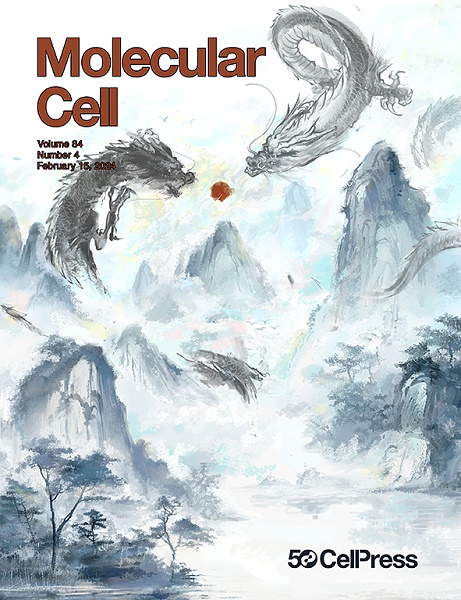Three-dimensional regulatory hubs support oncogenic programs in glioblastoma
IF 14.5
1区 生物学
Q1 BIOCHEMISTRY & MOLECULAR BIOLOGY
引用次数: 0
Abstract
Dysregulation of enhancer-promoter communication in the three-dimensional (3D) nucleus is increasingly recognized as a potential driver of oncogenic programs. Here, we profiled the 3D enhancer-promoter networks of patient-derived glioblastoma stem cells to identify central regulatory nodes. We focused on hyperconnected 3D hubs and demonstrated that hub-interacting genes exhibit high and coordinated expression at the single-cell level and are associated with oncogenic programs that distinguish glioblastoma from low-grade glioma. Epigenetic silencing of a recurrent hub—with an uncharacterized role in glioblastoma—was sufficient to cause downregulation of hub-connected genes, shifts in transcriptional states, and reduced clonogenicity. Integration of datasets across 16 cancers identified “universal” and cancer-type-specific 3D hubs that enrich for oncogenic programs and factors associated with worse prognosis. Genetic alterations could explain only a small fraction of hub hyperconnectivity and increased activity. Overall, our study provides strong support for the potential central role of 3D regulatory hubs in controlling oncogenic programs and properties.

三维调控中心支持胶质母细胞瘤的致癌程序
三维(3D)细胞核中增强子-启动子通讯的失调越来越被认为是致癌程序的潜在驱动因素。在这里,我们分析了患者源性胶质母细胞瘤干细胞的3D增强子-启动子网络,以识别中枢调节节点。我们专注于超连接的3D枢纽,并证明枢纽相互作用基因在单细胞水平上表现出高度和协调的表达,并与区分胶质母细胞瘤和低级别胶质瘤的致癌程序相关。复发性中心的表观遗传沉默-在胶质母细胞瘤中具有未明确的作用-足以导致中心连接基因的下调,转录状态的改变和克隆原性的降低。整合了16种癌症的数据集,确定了“通用”和癌症类型特异性的3D中心,这些中心丰富了致癌程序和与预后不良相关的因素。基因改变只能解释枢纽超连通性和活动增加的一小部分。总的来说,我们的研究为3D调控中心在控制致癌程序和特性方面的潜在核心作用提供了强有力的支持。
本文章由计算机程序翻译,如有差异,请以英文原文为准。
求助全文
约1分钟内获得全文
求助全文
来源期刊

Molecular Cell
生物-生化与分子生物学
CiteScore
26.00
自引率
3.80%
发文量
389
审稿时长
1 months
期刊介绍:
Molecular Cell is a companion to Cell, the leading journal of biology and the highest-impact journal in the world. Launched in December 1997 and published monthly. Molecular Cell is dedicated to publishing cutting-edge research in molecular biology, focusing on fundamental cellular processes. The journal encompasses a wide range of topics, including DNA replication, recombination, and repair; Chromatin biology and genome organization; Transcription; RNA processing and decay; Non-coding RNA function; Translation; Protein folding, modification, and quality control; Signal transduction pathways; Cell cycle and checkpoints; Cell death; Autophagy; Metabolism.
 求助内容:
求助内容: 应助结果提醒方式:
应助结果提醒方式:


